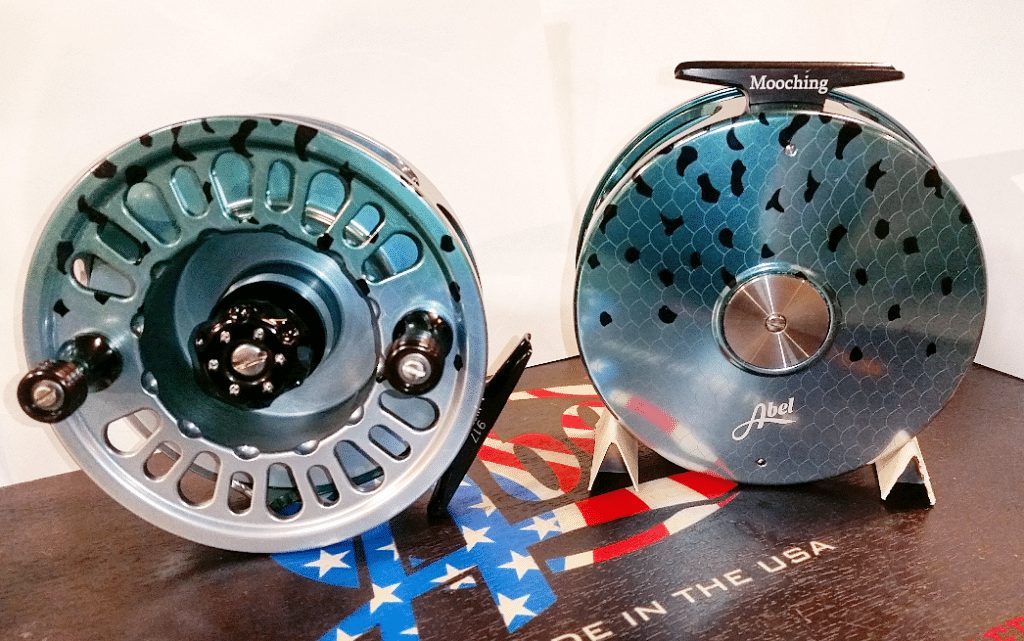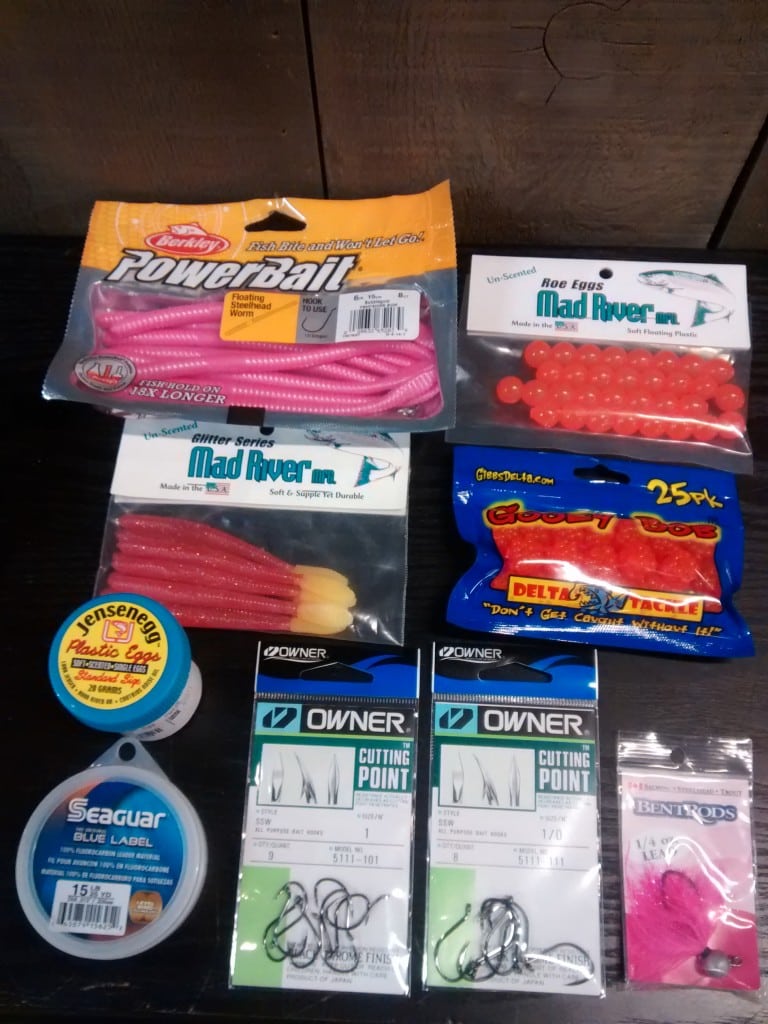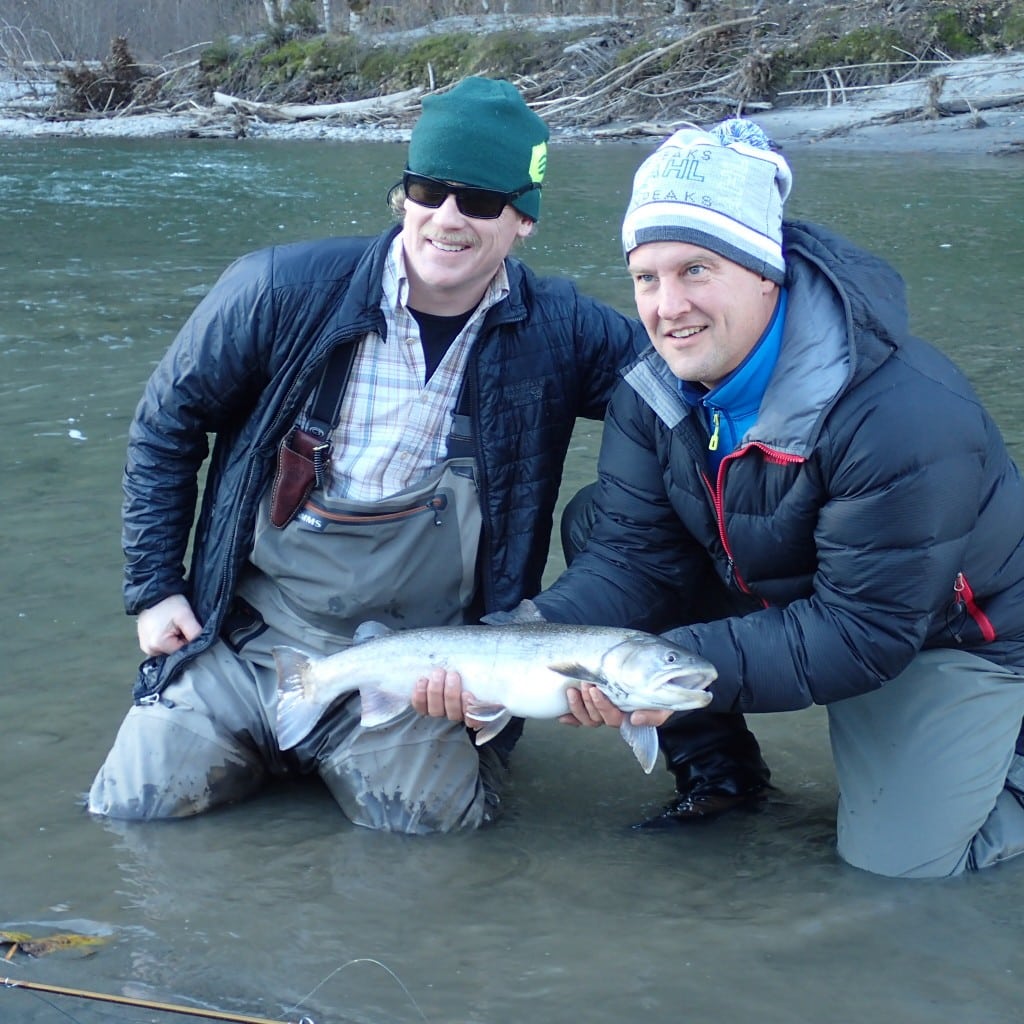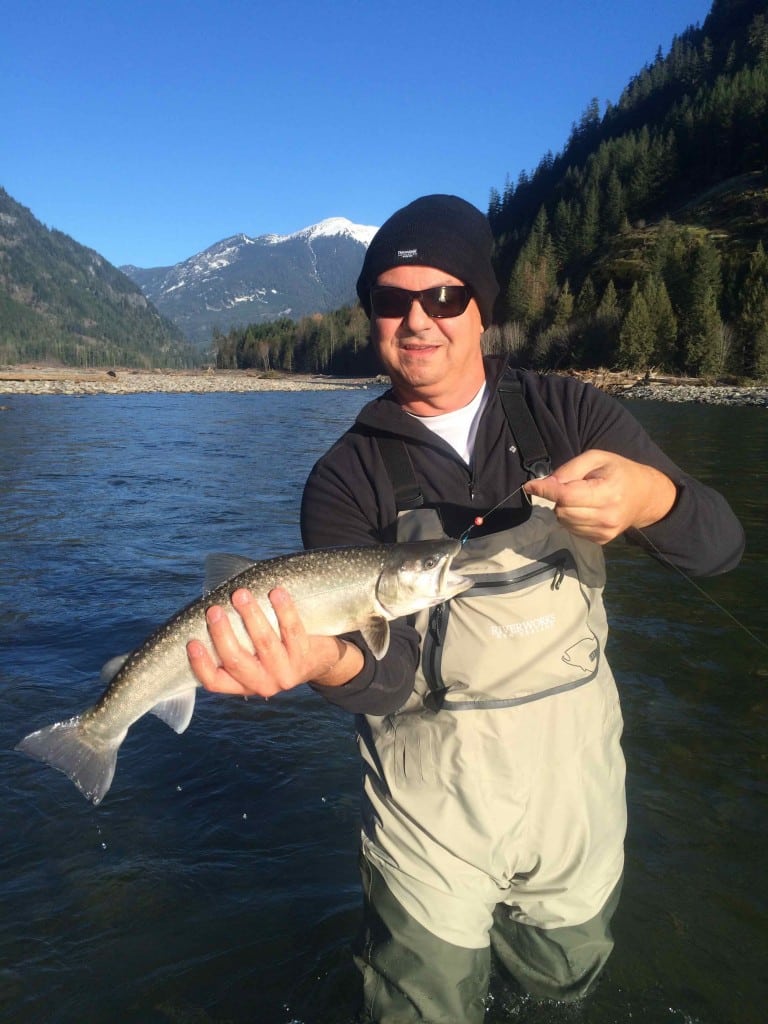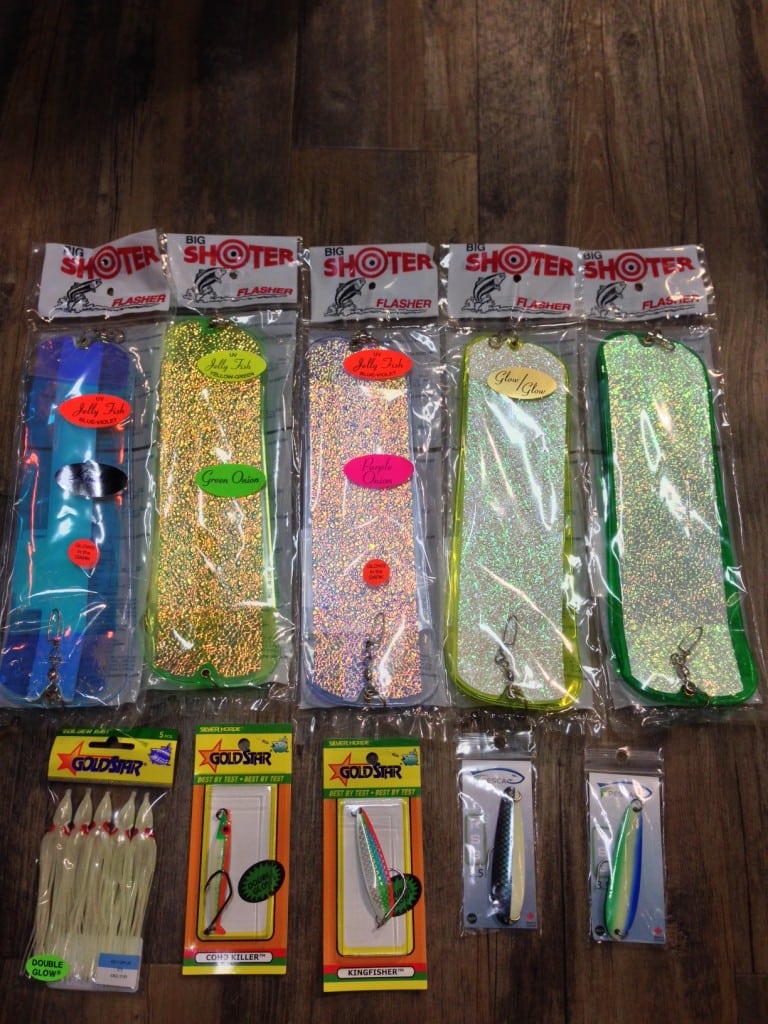OUTLOOK
It looks like we are welcoming December in with another round of rain. It is predicted to be a wet weekend, which may thwart plans for anyone looking to head out to the valley to scout some early steelhead spots or up to the Squamish area to work on their egging techniques.
This weekend would be a great weekend to get your Christmas shopping done and some time getting winter steelhead gear lined up and ready to go once the rivers come back into shape. Or stay dry and check out our just released 2016 Course Schedule and pick out what courses you want to sign up for in 2016.
For saltwater fisherman, December marks the time we start go get excited about one of our favourite fisheries of the year. We are starting to hear reports of the first fish of the season being landed. Check out the saltwater report below for a quick primer on these feisty fish.
COURSES
The long awaited 2016 Course Schedule is here! We are proud to announce another full year of courses, ranging from the popular Introduction to Fly Fishing to our Mastering Local Saltwater Salmon Course. We have a course for every angler, whether you are a beginner just starting out or an advanced angler looking to refine your craft, we offer a wide variety of courses on a number of topics, including:
- Introductory Courses
- Fly Tying Courses
- River Courses
- Saltwater Courses
- Steelhead Courses
Have a look at the full course line up here – Pacific Angler Master Course List 2016 and call the shop at 604.872.2204 to sign up!
PS – A course makes a great Christmas Gift for the angler on your list!
PRODUCT FEATURE
ABEL MOOCHER IN CHINOOK COLOUR-WAY
New in the shop for this Christmas season is the Abel Moocher with a custom, hand-painted chinook scale pattern. These are each individually painted by hand, and are not standardized decals. Each reel is hand built and assembled in Camarillo, California. Designed, machined, assembled and hand-painted, these reels are uniquely one of a kind and feature a patented cork-drag that is incredibly simple, yet effective. Abel Moochers are anodized with an exclusive quarter-century old proven system of corrosion-resistant metallurgy developed by the reel manufacturers themselves.
I use all Abel Moochers (I have four myself) at Langara Fishing Lodge, where I (probably shouldn’t) leave them uncovered all season. With incredibly tight tolerances, there is very little moisture creep and I find I have to very rarely ever open them up to dry them off or re-lube. I think I re-lube them maybe once during the season after the initial pre-season maintenance.
Featuring SEALED bearings and paired with the above mentioned cork drag, this makes for a no-brainer decision for those wanting an investment piece, or looking to seriously upgrade their arsenal.
With zero drag creep, audible click drag knob and incredibly tight tolerances, these reels are the standard that other US-made reels follow. Every single piece – yes, EVERY piece! – of these reels are made at Abel, down to the tiniest spring or screw.
This reels are a must see! Come down and check them out in person today!
FRESHWATER REPORTS
Chilliwack
Well it’s the first week of December and the salmon season on the Chilliwack has come to a close. We can now look forward to winter steelhead fishing till the spring. There can also be some decent trout fishing in December as the majority of the trout are feeding on salmon eggs. Drifting or nymphing egg patterns can prove to be quite effective for trout. The steelhead fishing usually doesn’t get going till around Christmas but there can be the odd fish that graces you with its presence. If you are planning on heading out to take part in this fishery in December I would recommend covering as much water as possible in a day and hope for your presentation to land in front of one.
What you fish will be based on the water clarity i.e. the clearer the water, the smaller the presentation (dime or nickel sized) the more colour the water has the brighter your presentation has to be (quarter, loonie, or toonie sized). Jensen eggs, 4- 6in pink worms, and jigs with pink materials for gear fisherman. Black and blue intruder patterns as well as pink intruders for the fly fisherman.
The Chilliwack River has a daily limit of 1 HATCHERY steelhead. All wild steelhead are catch and release and if you are wishing to angle for steelhead you must have a “Steelhead Stamp”.
Sam
Capilano
As we reported last week, the salmon season has come to a close on the Capilano. Any fish in the system are ready to spawn.
Squamish
This week on the Squamish saw some ok fishing early. Things were quite cold on the weekend and it made for challenging fishing. Fishing picked up as we started to see the front end of this storm but we expect the river to be high and dirty and potentially unsafe for Saturday and Sunday when the brunt of the storm passes through. This can actually make for great egg fishing once the river settles. When we look at the forecast this wont be for some time but if you are planning a day the second the river comes into shape after this storm it should be awesome fishing. Look to Mamquam and Cheakamus as the main river drops and fish larger bright beads to stand out in the colored water.
Though there are still a few coho in the system and every year we hear of fish being caught all the way until January, we expect the majority of the coho to have already moved through the system. The ones that are still around will probably be well into their spawn and should be left alone.
While we tend to focus on the egg presentations this time of year do not forget your streamer style patterns like olive sculpin and smaller minnow patterns. Swinging a fly is way easier to present than the indicator rig and some days covering water with the swung fly can be more productive. I like to have both options in my arsenal when heading out this time of year. Light Switch rods and mid weight single hand fly rods, fishing sink tips are great for this presentation. I tend to use short 8lb leaders with relatively heavy sink tips.
If you are a gear fisherman use standard egg imitations and float fish with a centerpin or light float fishing rod can be tons of fun and very productive.
Remember all tributaries of the Squamish, excluding the Mamquam, Ashlu, Cheakamus and Elaho are closed to fishing at this time of year. With another high water weekend it is sometime hard to realize what is a tributary and what is main stem Squamish. Protecting the fish and habitat in small spawning streams is critical to this river so if in doubt don’t fish it.
Also remember that the entire system is a single barbless, catch and release fishery with the exception of hatchery coho but these fish are extremely rare and by now are probably not worth keeping. Play by the rules, respect your fellow anglers, and respect the fish. Good luck on the water!
Pacific Angler’s Advanced Indicator Nymphing Rig
In last week’s report I talked about the “Simple Nymphing Rig”. This is still one of the best ways to dead drift a nymph style fly. There are situations where I actually prefer the simple rig, that said we have developed a more advanced rig that is specifically designed for nymphing and helps combat a number of factors that challenge anglers hoping to achieve the perfect dead drift presentation.
To understand the “Advanced Nymphing Rig” we have to look at the presentation of the dead drift and identify the challenges that occur when we attach a fly line and leader to the fly. The first of these challenges is line drag. Modern monofilament tapered leaders have short front tapers. Their taper is designed to cast the fly well and does not take into consideration how the fly will drift under the water after the cast. When nymphing we are very rarely casting a long way where a short front taper will help deliver of the fly. When the long thick back portion of the standard leader hits the water, the thick part of the leader causes drag. Drag is the bane of any nymph fisherman and even uneducated, hungry fish can reject a fly that is dragging in an unnatural way.
The second challenge that affects a standard leader is its sink rate. The same way the thick tapered lead will drag in current it also drags as it sinks and the fly will not sink quickly or naturally. This slow unnatural sink shortens the amount of time your fly is in the zone.
The Solution – The Advanced Nymphing Rig
When building a custom leader we can use the concepts above and design a better leader. The first part of the recipe is a very thick 20-30lb butt section. On this butt section I place my Indicator. For most applications, I use Fish Pimp indicators or Thing-A-Bobber. On the Skagit/Birkenhead (smaller shallow streams) I use 3ft of butt material. Oddly enough on bigger deeper rivers I use less because I do not need to change the placement of my indicator as much.
I have been playing with using different colored mono in this butt section. With many of my mends I like to hop the indicator off the water and with brightly colored line like Pro-spec yellow I can see the angle at which the line is heading below the indicator. This angle can tell me a lot about how natural my drift is. In an ideal world the line goes almost straight down from the indicator. If I see it at a big angle I know my fly is dragging or not sinking and I need to mend to fix it.
From the butt section I use 1ft section of 10-15lb fluorocarbon. This gives the leader a little taper. I find it helps with casting and tangles. From this 10-15lb section I blood knot a thin clear fluorocarbon tippet material. Fluorocarbon is much clearer and more importantly denser and thinner than mono. This means it has less drag and sinks faster than a standard mono leaders. These are all wins for the nymph fisherman trying to achieve a perfect drift. For the most part I use 5-6ft of 7lb fluoro on the Squamish and 5-6lb on smaller trout streams. This long section of small diameter line is the key to this rig. It does not drag half as much as the standard leader or even as much as a full tapered fluorocarbon leader.
At the end of this thin sinking section I tie on a small swivel or tippet rig. I anchor a small wingless split shot above this point and with this rig I do not have to go too heavy with weight because it sinks fast and I believe you get a better natural floating drift if you can get close to the bottom but do it with less weight dragging on the fly.
Ok, if you are a purest and this article is already making you shake your head, I recommend that you stop reading right now!
For those of you who love this style of fishing and appreciate the skill that goes into getting a perfect drift you probably also understand that the Squamish is cold and setting up a bead style egg rig with cold hands sucks and cuts into fishing time. From 6 years of doing the indicator nymph course I have learned some tricks and we have come up with a number of ways to help “rig” this set up. Much of this “rigging” has been stolen from my float fishing friends. All I have done is scaled it down for fly fishing.
I take 18in of 5-7lb fluorocarbon and attach a fly snap (yes, the old school snaps for guys who can’t tie knots) but we do not tie it to the fly end. I attach it to the end going to the leader. The clasp easily snaps onto the swivel or tippet ring. The reason I do this is because with cold hands I find it a pain to be constantly trying bead rigs with pegs, wool and hooks. I pre-tie about a dozen egg tippet rigs in different sizes and colors and again steeling from my gear fishing friends, I put them on a leader board pegged and ready to go. With this leader board I can change egg colors fast and if I break off and I only loose the hook I can snap off the old broken tippet and snap on another egg rig.
No matter how good you are with a fly rod you will tangle bead rigs. There are just too many ways to tangle, be it on a bad cast, wind, missing a hook set or even when a hook pops out while playing a fish and the whole rig flies back at you in a ball. If you have the ability to take off the indicator, unclasp the tippet and work on the knot, it is way easier to save a train wrecked leader. Another useful tip is to tie one or two full leaders (colored butt section, taper piece and long fluorocarbon section) and wrap them on the leader board. This way when you really train wreck and know the tangle is a losing battle you can hack off the whole leader and loop on a fresh one.
If you missed last week – the way I rig the bead is exactly the same so check out last weeks report for the standard rig for pegging directions.
Matt
Stave River
These next few months will see anglers shifting their focus to trout and whitefish on light tackle and gear (fly included). Small nymphs, streamers, spinners, and spoons are all great starting points. Now is a great time to make sure your winter steelhead gear is in top shape. On lay-days, one can organize, inventory, and do gear checks for this soon-to-be fishery. Fly anglers may want to start tying flies.
For those looking for their first steelhead, the Stave generally get’s good returns each season and should be considered a contender for those starting out.
Fraser (tidal/non-tidal)
Not much is going on these days in the main stem, and any anglers heading out will want to focus on back channels and sloughs.
Coarse fishing has remained steady for those who like ultra-light fishing with spinning gear. This is where float fishing with various small baits can offer children an exciting afternoon once school is out. Focus on regional parks with floating docks or easy to access shore areas for safety.
Jordan
SALTWATER REPORT
Well it is true! It’s December already and right on queue we are starting to hear about the first winter chinook, or feeders as they are sometimes called. These are chinook that hangout in our local waters in the winter and are aggressively feeding on herring. They are some of the scrappiest and tastiest chinook you will ever catch and are a favourite of our local clients and the guides. Locally there have been a few fish caught in Vancouver Harbour as well as Howe Sound. There is also a large derby in Washington this weekend that some customers and fellow guides are in. The results from this derby will be a good indicator as to the strength of the winter chinook fishery just south of us. A lot of the winter chinook we catch up here are US fish, so I am looking forward to seeing how the fishing is during this derby on the weekend. There are 100 boats entered and they have catch stats from all previous years so it is a decent indicator.
A quick primer on these feisty winter chinook. The main key to catching these fish is getting your gear down to the bottom and keeping it in that zone. These fish are cruising the bottom looking for herring. That might mean 100 feet or it might mean 250 feet, it depends on the spot you are fishing. During this fishery we usually fish 2 rods, just one on each downrigger, and we fish 18 LB cannonballs. This allows us to troll fast, cover water, and keep our gear close to the bottom while doing so. I already alluded to the second important factor for this fishery, and that is covering water. These are actively feeding, aggressive fish. That means they aren’t necessarily hard to catch, but they can be hard to find. Here one day gone the next is a common scenario when fishing for winter chinook. One of the best choices when trolling fast and also deep are artificial presentations like spoons and hootchies. They are more durable than bait and you can use finishes that glow. This is key as it is pretty dark down there at 200 feet. You can and will catch fish on bait in a glow teaser head, but a glow spoon or glow hootchy seems to work as good if not better. The same goes for your flasher, the water is clear in the winter, but if you are fishing deep, a flasher with some glow on it is critical. Green Onion Glow, Purple Onion Glow, and Kinetic Glow are all excellent choices when fishing the 100-150 zone and when you are really deep, say 200 or more, a Chartreuse Glow, Green Glow or Double Glow flasher is the way to go.
An added bonus is that crabbing and prawning is usually quite productive throughout the winter months as well. Although you wouldn’t think it from the winds this week, often the winter sees the calmest seas of the entire season. So while the rivers are out and the steelhead have yet to come, think about winter chinook fishing and give us a call to book a trip for Dec, Jan, or Feb as it is some of the funnest chinook fishing of the year.
Jason


